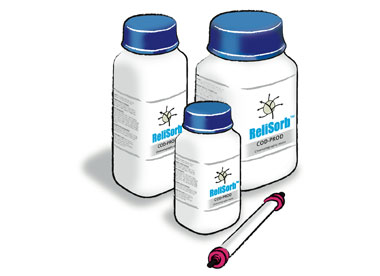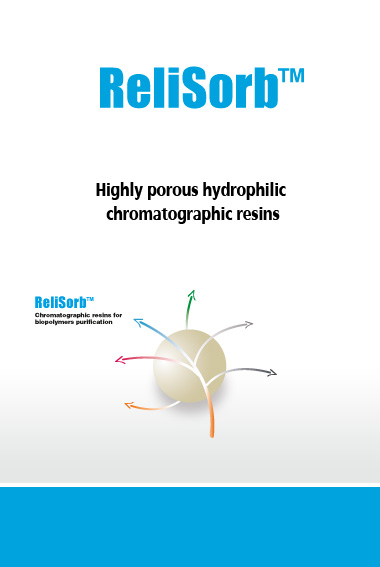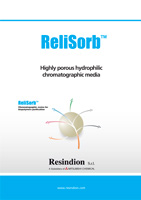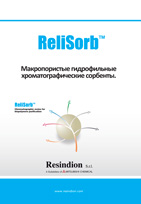
Hydrophobic interaction chromatography
Hydrophobic Interaction Chromatography (HIC) is a chromatographic technique frequently used for the separation of biomolecules on the basis of the hydrophobic interactions between the stationary phase and the compounds to be separated.

The level of hydrophobicity of the target molecule that has to be separated is the guidance for the selection of the most appropriate ReliSorb™ HIC resin. To enhance it, a high amount of salt is added to the loading raw solution to reduce the molecule solvation and thus increase the interaction with the HIC resin functionalized with mild hydrophobic groups (phenyl, butyl and octadecyl groups) (see the table below).
| Functional group - Phenyl |
Functional group - butyl |
Functional group - Octadecyl |
 |
 |
 |
As the ionic strength of the buffer solution decreases, the hydrophilic region of the target molecule become exposed and desorption/elution is obtained. Sometimes elution may also be completed by adding mild organic modifier or detergent to the low molarity elution buffer.



